Bose Smart Ultra Soundbar review: the ultimate single-box solution?
A single soundbar solution to take on the Sonos Arc: Bose's Ultra Soundbar is an impressive option to shortlist
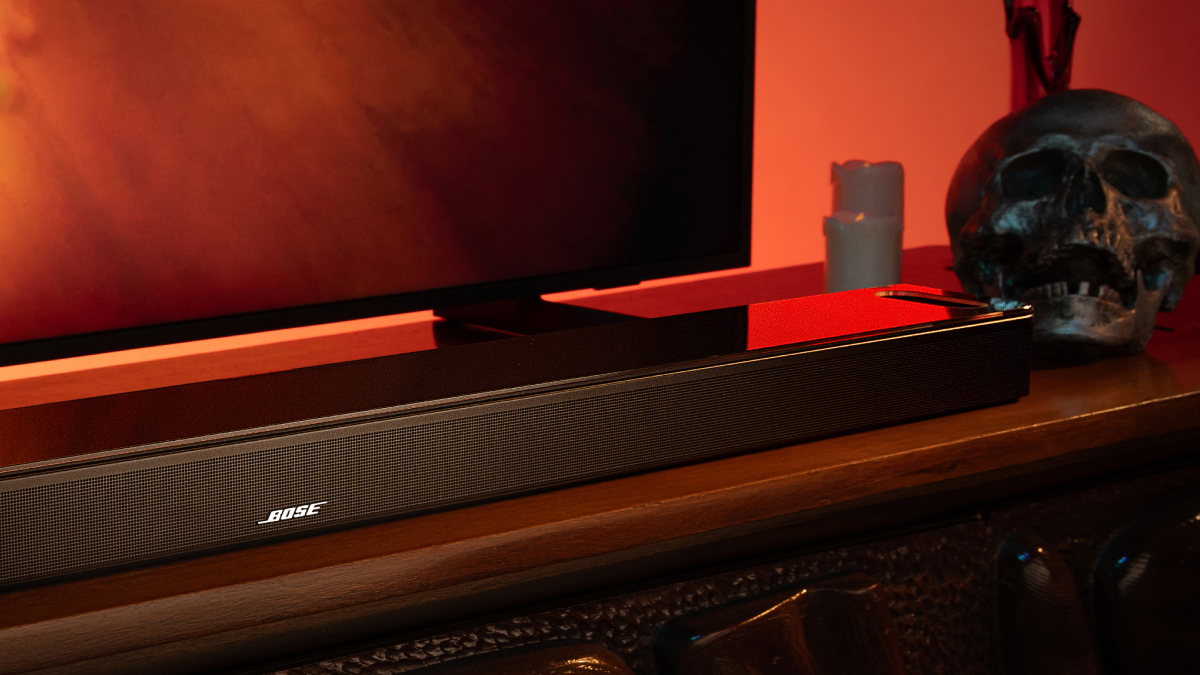
A premium soundbar in terms of specification and build quality, but in a useful compact form, should be a recipe for success - and up to a point, the Smart Ultra Soundbar is certainly successful. It’s not without its sonic shortcomings, though, which means it’s not exactly the no-brainer Bose was shooting for…
-
+
Sound is detailed, balanced and notably wide
-
+
Excellent quality of build and finish
-
+
Great control options, and plenty of them
-
-
Could easily sound heftier
-
-
Sound is not as spatial as it thinks it is
-
-
‘TrueSpace’ should be optional rather than compulsory
Why you can trust T3

Bose has given a few of its product ranges the ‘Ultra’ treatment in 2023 - from the QC Ultra Headphones to QC Ultra Earbuds - and this, its flagship Dolby Atmos-enabled soundbar, is the latest.
So what’s so ‘ultra’ about the BoseSmart Ultra Soundbar? And is it really ‘ultra’ enough to do some damage to the all-conquering Sonos Arc? T3 is here to review the Bose Ultra soundbar and bring you all the details...
Bose Smart Ultra Soundbar: Price & Release Date
The Bose Smart Ultra Soundbar is on sale now, and in the United Kingdom it’ll set you back around £899. In the United States it goes for a slightly more palatable $899. Meanwhile in Australia you’ll need to part with AU$1,499 to secure one.
This is approaching ‘premium’ territory for a standalone soundbar, it hardly needs saying. Certainly the Bose has lined itself up against the (slightly more expensive) Sony HT-A7000 - but probably more significantly, it’s ready to go toe-to-toe with the (slightly less expensive) Sonos Arc. These are serious products Bose is picking a fight with.
Bose Smart Ultra Soundbar review: Features & What's New?
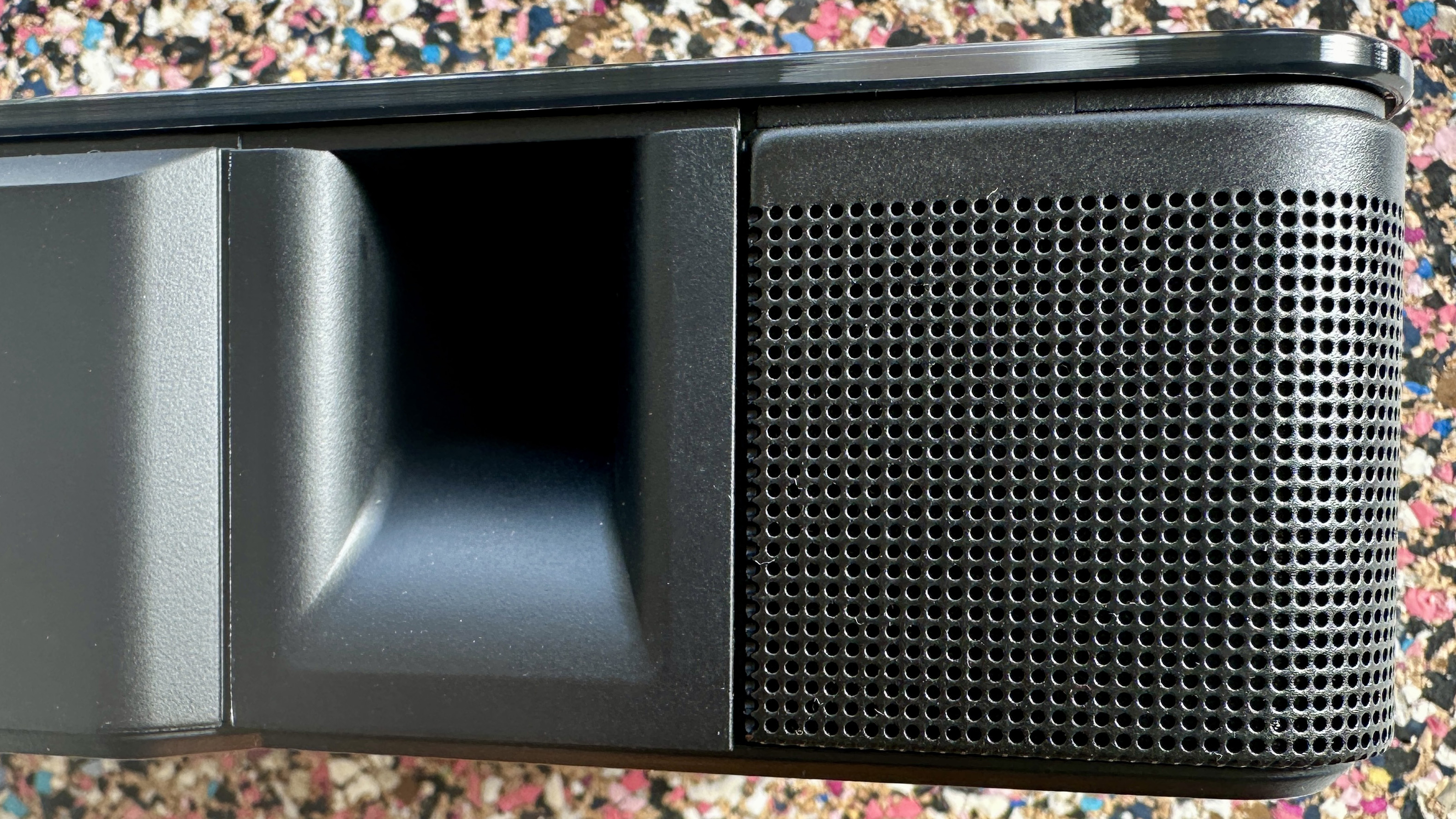
As far as ‘features’ are concerned, the Bose Smart Ultra Soundbar has plenty. When it comes to ‘what’s new’, though, there’s not a lot to report on that isn’t carried over from the outgoing Smart Soundbar 900.
The Smart Ultra is compatible with Dolby Atmos, Dolby Digital, Dolby TrueHD and Dolby Digital Plus sound formats. It’s also equipped with Bose’s ‘TrueSpace’ virtualisation technology - and in this implementation it’s doing its thing with non-Dolby, non-spatial audio content at all times, whether you like it or not. The rationale, I suppose, is that having fitted nine speaker drivers to the Smart Ultra, it would be a pity not to utilise them.
This nine-strong driver array consists of six 100x50mm full-range ‘racetrack’ transducers and three 25mm tweeters, supplemented by a couple of rear-venting bass reflex ports. There’s a transducer behind each of the perforated metal grilles exposed in the cutaways at either end of the top plate - they’re angled to create an impression of sonic ‘height. The other four transducers are positioned fairly near the centre of the front of the chassis - there are two on either side of a central tweeter. The remaining two tweeters are at each end of the front face, each one behind some ‘phaseguide’ technology designed to summon a sensation of width to the Bose’s sound.

Getting audio information on board in the first place can be done in a number of ways. The Smart Ultra’s physical connectivity runs to HDMI eARC, digital optical and Ethernet sockets, as well as a USB-C slot that’s purely for servicing. All four of those connections are in a little recess at the rear of the chassis - there’s a second recess with more connectivity options.
In the latter you’ll find a figure-of-eight mains socket and four 3.5mm analogue inputs - one is for data, one is for an IR blaster, one is for the ‘Adaptiq’ calibration mic, and one is for connecting one of those subwoofers Bose insists on referring to as a ‘bass module’. Wireless connectivity is handled by Wi-Fi and Bluetooth 5.0 (with SBC and AAC codec compatibility). Apple Airplay 2 is available, and Chromecast is built in.
‘Adaptiq’ is by no means the only automated room calibration function on the market, but - to my knowledge, at least - it’s the only one that insists that you wear a little headband in order for it to do its thing. At one end of a very generous length of cable there’s a 3.5mm jack - this plugs into the corresponding input on the rear of the soundbar. At the other end there’s a plastic headband with a mic embedded - put it on (try not to feel too self-conscious) and let the soundbar fire off a series of test-tones in order to establish its environment. And then move around your favourite viewing positions another four times while the Bose does its thing. At the end of the process, the Smart Ultra is optimised to your specific listening room.
There are a couple of mildly unusual additional features, too. ‘Voice4Video’ allows compatible televisions, cable and/or satellite TV boxes to be controlled, along with the Smart Ultra, using Amazon Alexa voice assistance - turn on the TV, select inputs and adjust volume simply by asking for it. ‘AI Dialogue Mode’, meanwhile, can be switched on or off - and unlike the more usual ‘news’ or ‘dialogue’ EQ preset that simply shoves the midrange forward, this is constantly assessing the content you're listening to in order to balance voices against effects for maximum intelligibility.
Bose Smart Ultra Soundbar review: Performance
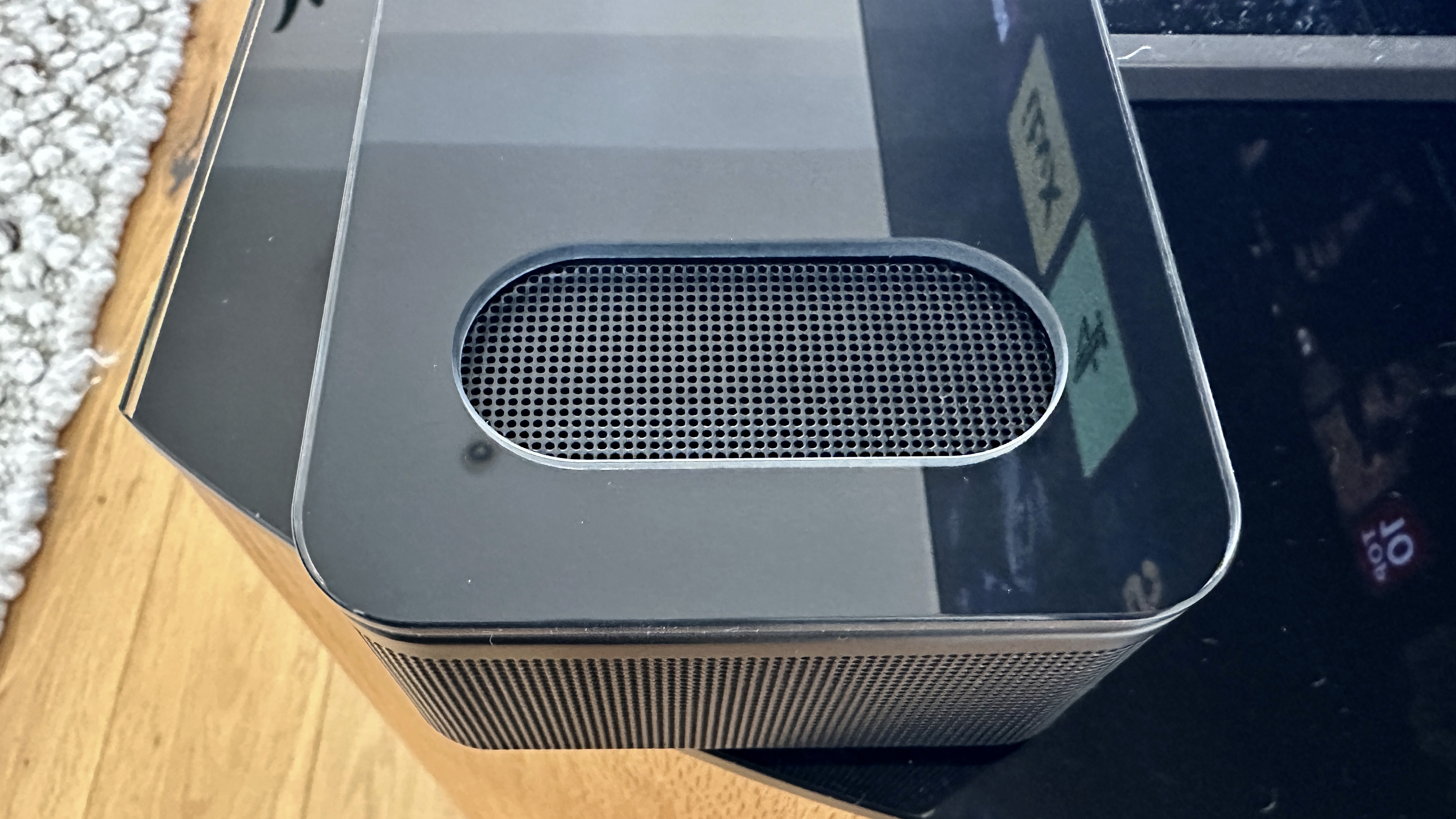
The Bose is, thanks to its ‘TrueSpace’ technology, more than happy to make the best of whatever standard of content you put into it. But you’re not thinking of spending the thick end of a thousand pounds/dollars on a soundbar in order to let it do its thing on daytime TV reruns, are you? Of course not.
And when given a state-of-the-art Dolby Atmos soundtrack embedded on a 4K UHD Blu-ray disc to deal with, the Smart Ultra Soundbar goes a long way towards justifying its asking price. It’s a poised, deft and nicely balanced listen, and it hands over what surely must be every scrap of sonic detail that’s there on the disc.
The tonal balance it strikes is impressively natural and neutral - there’s no unwarranted heat in the Smart Ultra sound, and no suggestion of coolness either. The transition through the frequency range from the top to the bottom is smooth and convincing, and the even-handedness extends to the way the Bose organises its soundstage. There’s more than enough space on what is a notably wide, usefully deep stage for each element of even the busiest soundtracks to do its thing securely. The Smart Ultra shifts effects confidently, and ties the entire presentation together into a unified whole rather than a collection of individual occurrences.
It’s particularly adept through the midrange. There’s real positivity to the way the Smart Ultra presents voices, and the detail levels are so high that every scrap of character, of emotion and motivation of speakers is made plain. There’s so much space on the soundstage that voices get all the breathing-space they need to fully express themselves - but they never sound isolated or estranged.
There are, without doubt, minor issues on either side of the midrange though. At the bottom of the frequency range, there’s good control and subsequently impressive momentum to bass sounds, and plenty of detail along with it - but the Bose doesn’t hit as hard, or with as much determination, as quite a few of its nominal rivals. It’s possible to fiddle with the ‘bass’ setting in the control app, of course, but ramping it up simply makes it louder and spoils the overall balance of the presentation - it doesn’t make bass response any more substantial.
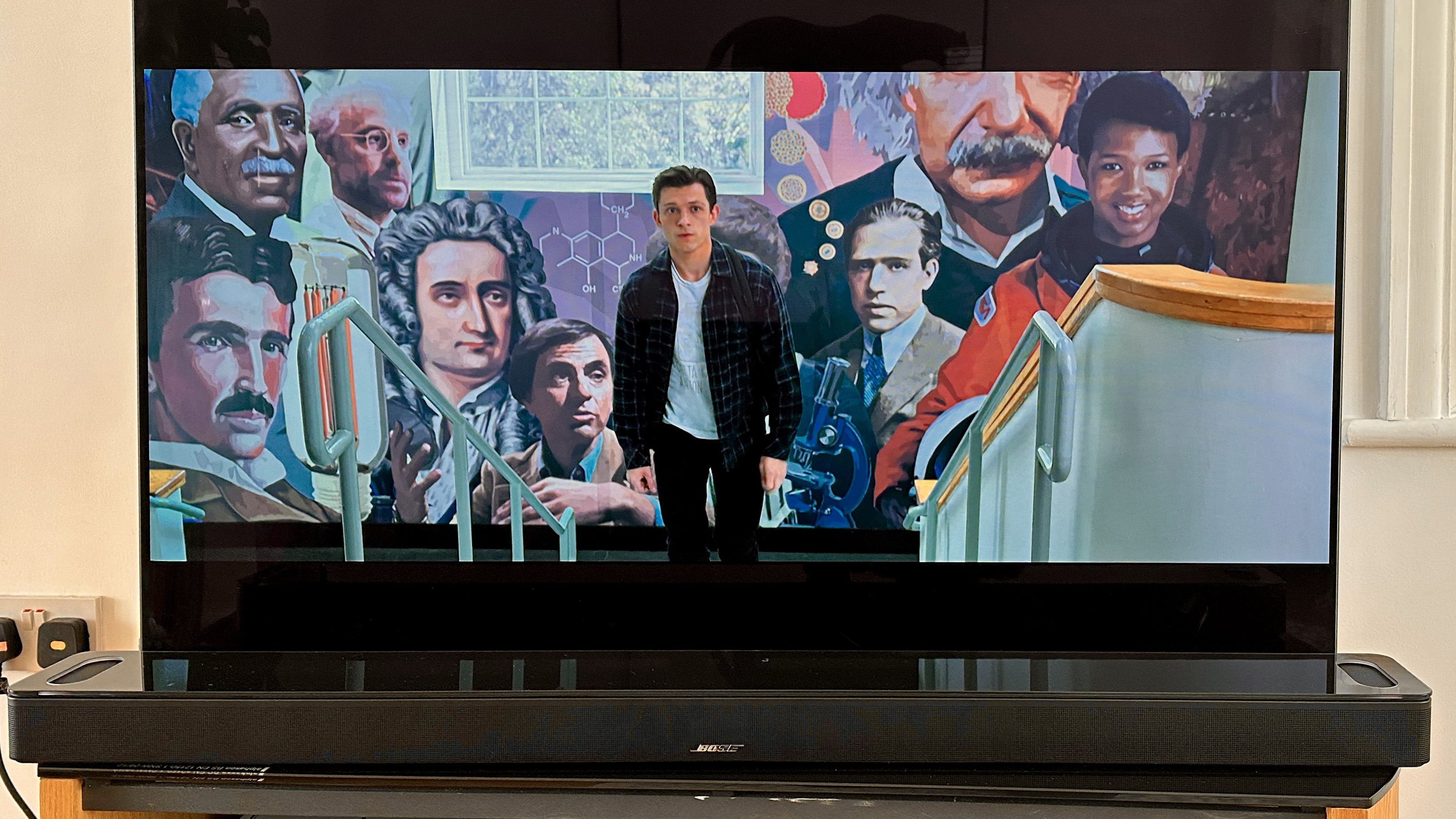
The top of the frequency range attacks with crisp determination, but it’s constantly on the edge - it doesn’t take particularly injudicious volume levels to make the treble become just slightly hard and aggressive. There’s substance to balance out the bite here, but in the wrong circumstances (or with the ‘wrong’ content playing), the top-end walks a tightrope.
Of greater concern, though, is the rather curtailed sensation of sonic height the Smart Ultra Soundbar delivers. There’s a suggestion of elevation to its sound, but it’s mild - especially when you compare it to the prodigious width the Bose is capable of generating. Despite the presence of dedicated up-firing drivers, and despite the soundbar being tested in a space with very ordinary ceiling height, the Smart Ultra isn’t the most ‘spatial’ spatial audio soundbar you ever heard.
Switching to some less information-rich content that’s mixed for fewer channels lets the ‘TrueSpace’ technology have some input - and it’s pretty successful, up to a point. Certainly it maintains the Smart Ultra’s remarkable way with detail retrieval, the soundstage maintains its scale and the tonal balance is consistent too. The Bose becomes a little less certain when it comes to locking elements of a soundtrack into position on the soundstage - there’s haziness where previously there were nice straight edges - but it’s far from being a fatal flaw.
Switching further down to stereo content, whether movie or music, illustrates the limitations of ‘TrueSpace’ though. The stage layout becomes confused, the treble response takes the opportunity to show its teeth, and while the low frequencies still maintain good rhythmic expression there’s a definite lack of substance underpinning a recording or a soundtrack. It would be nice to turn ‘TrueSpace’ off and hear what the Smart Ultra makes of stereo content when it delivers it in stereo, but unfortunately that’s not an option.
Bose Smart Ultra Soundbar review: Design & Usability
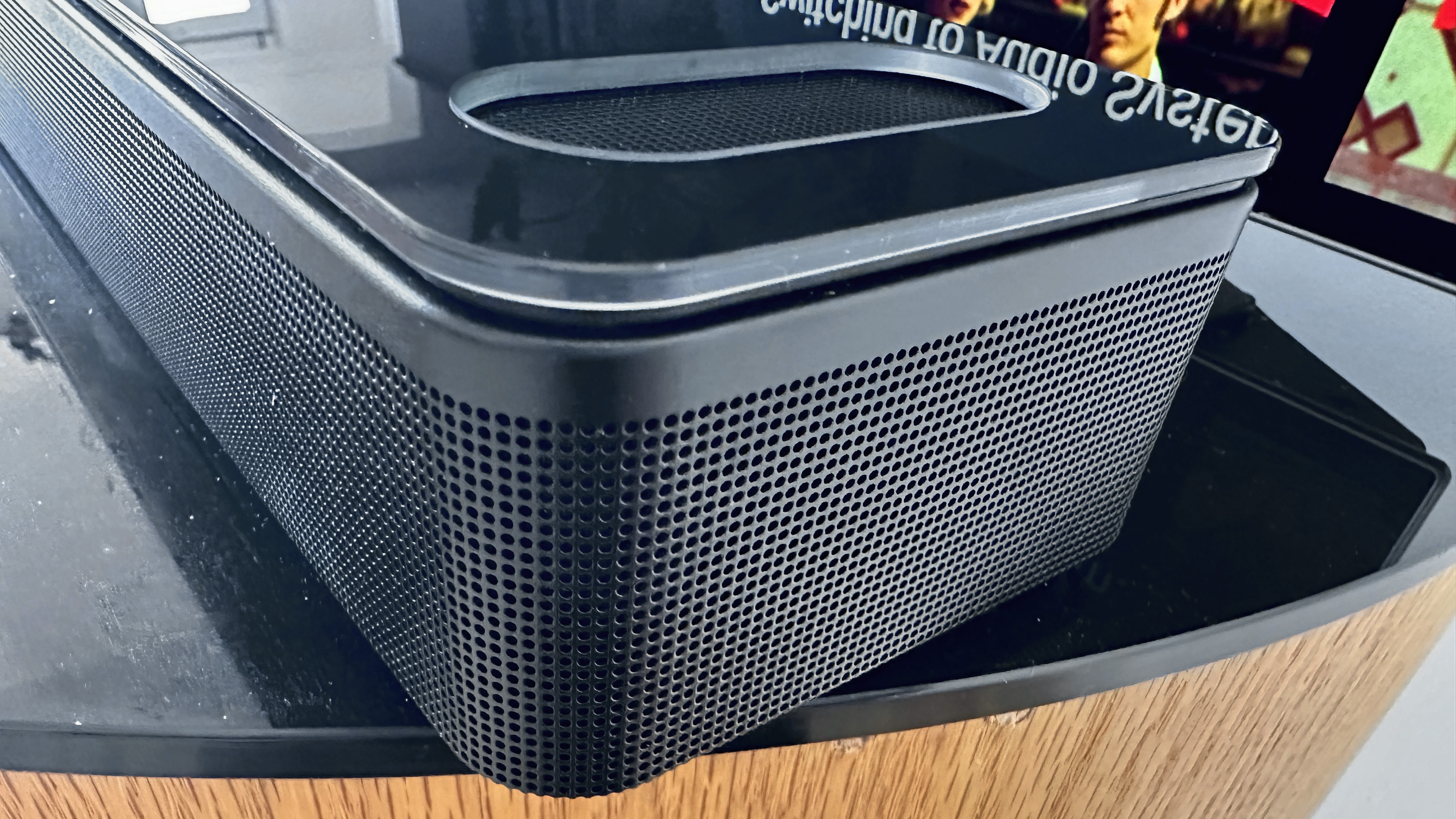
If you’re familiar with the outgoing Bose Smart Soundbar 900, then nothing about the way the Smart Ultra Soundbar is designed is going to startle you. In fact, at a glance you’d be very hard-pushed to tell them apart.
At an unobtrusive 58 x 1045 x 107mm (HxWxD) and a similarly unremarkable 5.8kg (with a wall-bracket a cost option), the Smart Ultra is discrete to the point of invisibility. It’s built from a combination of high-quality plastic, a quantity of perforated metal that covers the front of the chassis and wraps around each side in order to act as a grille, and tempered glass for the top surface. Everything is put together beautifully, the entire thing feels high-end and built to last.
Yet the selection of glass for the top of the soundbar is as weird a choice here as it is everywhere else I’ve seen this material deployed on a soundbar. It’s reflective of the television screen it’s sitting below, for one thing, and it’s more than happy to collect and retain fingerprints for another. So while it does add a little visual pizzazz to what is a necessarily functional design, it nevertheless seems rather thoughtless.
There are a couple of touch-controls on that glass surface. One is to mute the integrated mics, the other is a multifunction ‘action’ button, and both will - guess what? - happily retain the fingerprint of whoever used them last. Perhaps you’d be better off sticking to one of the other control options - there are, after all, several.
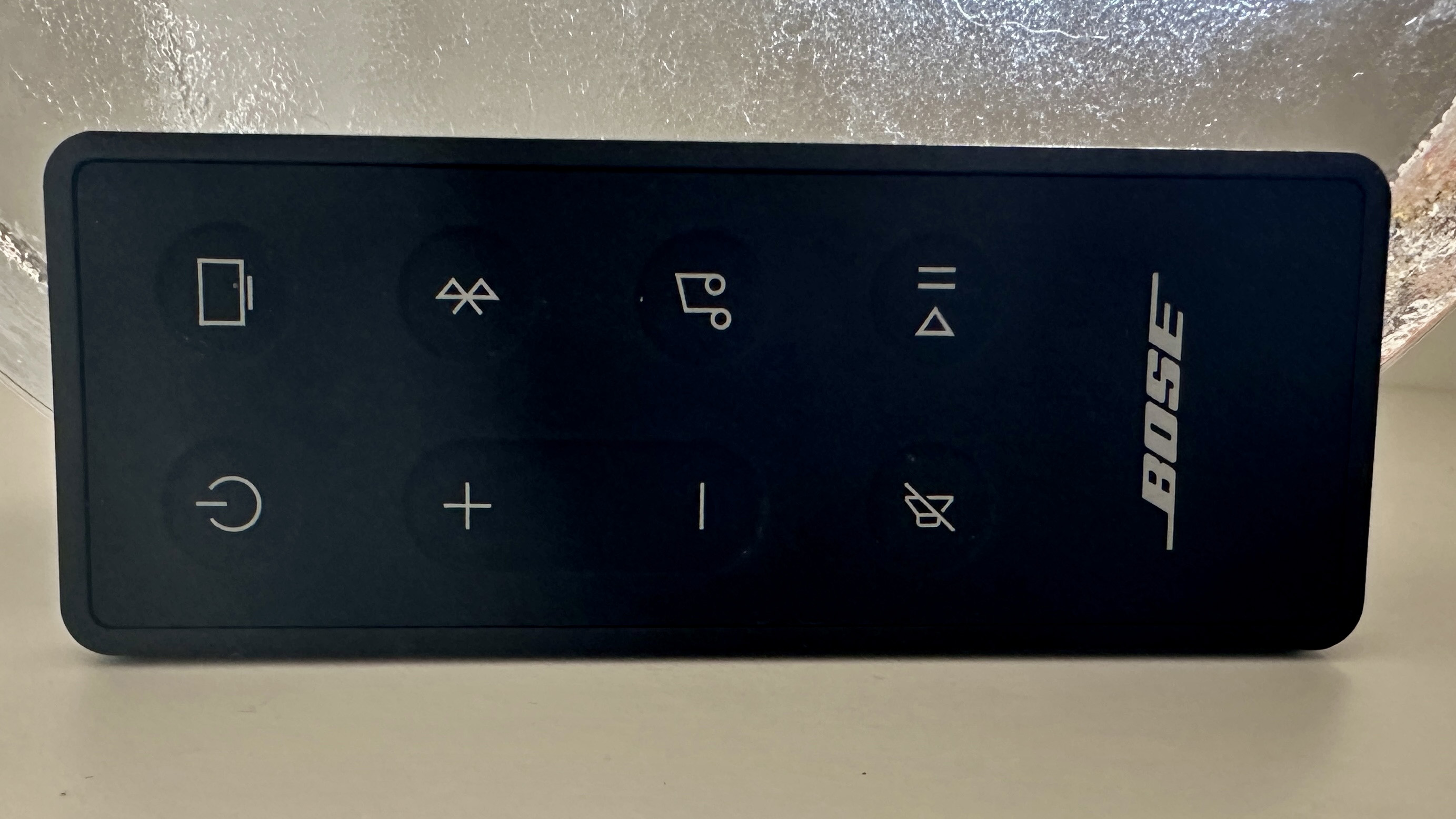
The Smart Ultra ships with a small, rubbery and nice-to-use remote control handset. Its long-press buttons handle the most major features (‘power on/off’, ‘volume up/down/mute’, ‘play/pause’ and input selection), and it’s a step or two up from the little clicky credit card-sized alternatives that many rival manufacturers consider adequate.
Or you can use your voice if you prefer. The Bose is compatible with Amazon Alexa, and if you’ve an appropriate speaker on a common network then Google Assistant is available as an alternative. The mics embedded in the soundbar prove alert and responsive, and it seems difficult in the extreme to confuse Alexa in this implementation, no matter how many ‘comedy’ accents you try out.
Best of all, though, is the Bose Music control app that’s free for iOS and Android. It’s fair to say there’s nothing showy or, in fact, especially interesting about the way this app looks - but it’s clean, stable and logical. And it covers every single function you might conceivably be interested in. From the basics of playback control and volume, via EQ and level adjustment for centre and height channels plus bass and treble, to arranging a multi-channel or multi-room system with the Smart Ultra at its heart, the app is all you need.
The app allows you to set up that Alexa voice control, to integrate your favourite music streaming service, to enable Chromecast, and to assign as many as six presets to your favourite playlists or what-have-you. It’s also where the ‘Adaptiq’ room calibration routine, ‘Voice4Video’ and ‘AI Dialogue Mode’ features mentioned above can be accessed.
Bose Smart Ultra Soundbar review: Verdict
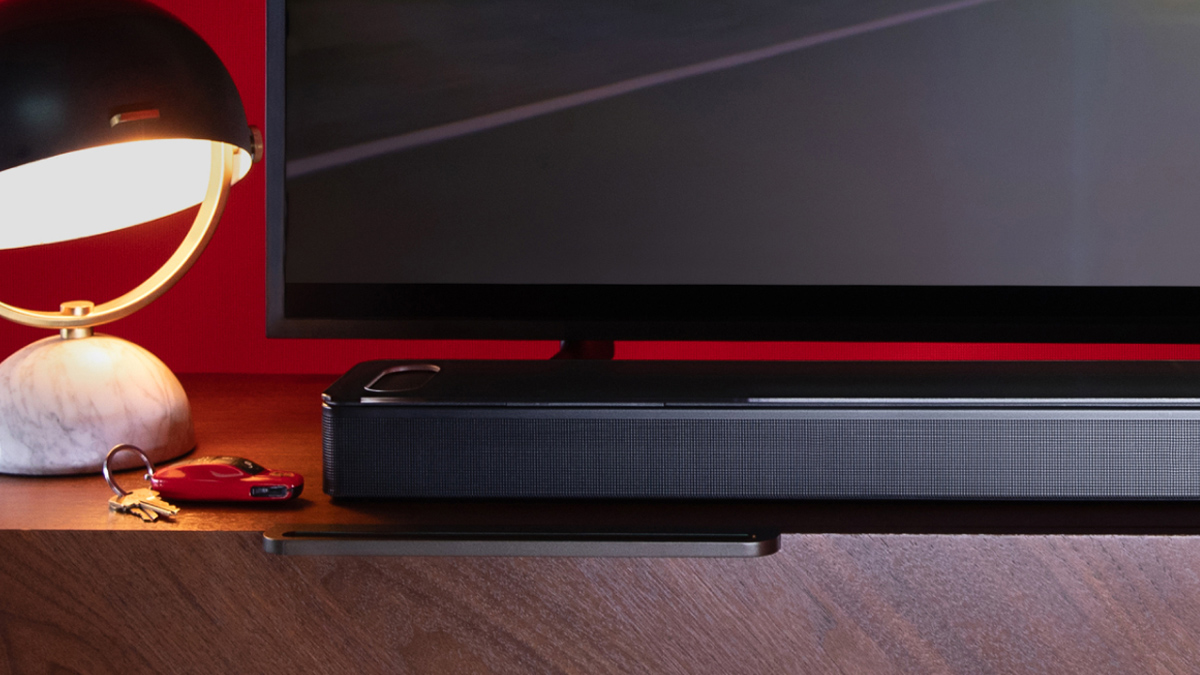
If you’re after a soundbar that’s built and specified like a flagship device but doesn’t occupy the sheer amount of space a product like this usually does, the Bose Smart Ultra Soundbar could be just the ticket.
It’s not as if it’s short of sonic talent - where detail retrieval, soundstage organisation and winningly neutral tonality is concerned, it’s a match for any nominal rival, including the Sonos Arc. With greater low-end punch and greater height-channel reach from the Bose, it's a serious contender for your best soundbars shopping list.
Also consider
The default choice at this sort of money remains the Sonos Arc - it combines impressive spatial audio reproduction with great streaming and smart features, and it’s no slouch with music either.
But the real boss is the Sony HT-A7000 - yes, it’s more expensive than the Bose but when you hear it you’ll know where that money has gone. It’s a punchily expansive listen, with great height and width to its presentation - and its HDMI passthrough doesn’t do any harm either. It’s almost good enough to make you ignore the portion of glass on its top surface…
Sign up to the T3 newsletter for smarter living straight to your inbox
Get all the latest news, reviews, deals and buying guides on gorgeous tech, home and active products from the T3 experts
Simon Lucas is a freelance technology journalist and consultant, with particular emphasis on the audio/video aspects of home entertainment. Before embracing the carefree life of the freelancer, he was editor of What Hi-Fi? magazine and website – since then, he's written for titles such as Wired, Metro, the Guardian and Stuff, among many others. Should he find himself with a spare moment, Simon likes nothing more than publishing and then quickly deleting tweets about the state of the nation (in general), the state of Aston Villa (in particular) and the state of his partner's cat.
-
 Google just added a new Gemini video creation tool I never knew I needed
Google just added a new Gemini video creation tool I never knew I neededGemini Advanced just added Veo 2 video generation
By Mike Lowe Published
-
 One of the best villains in gaming is coming to Xbox Game Pass for free
One of the best villains in gaming is coming to Xbox Game Pass for freeAll Game Pass subscribers are getting one of the best single-player shooters of the decade
By Rik Henderson Published
-
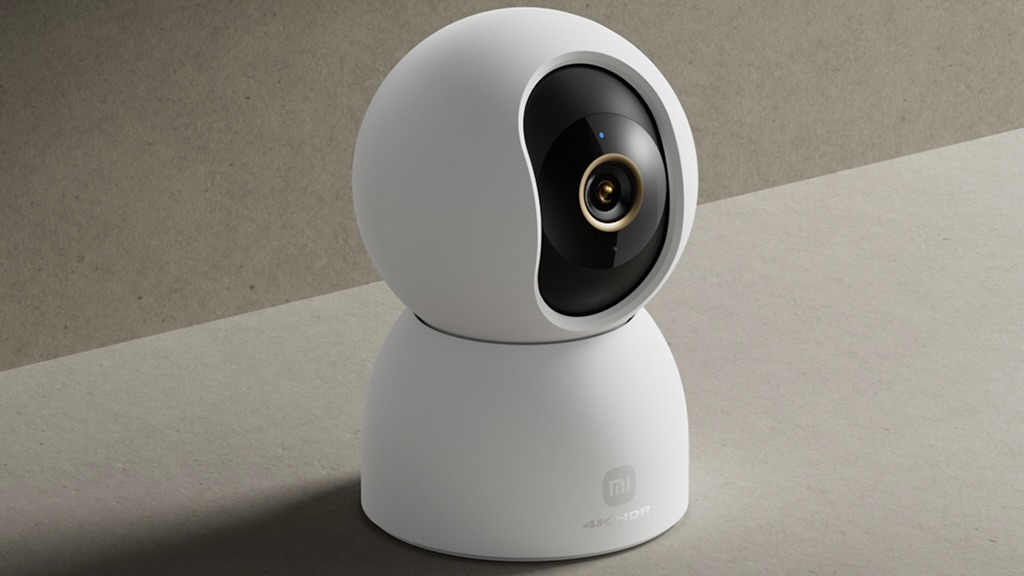 Xiaomi’s next indoor smart security camera could be its most affordable yet
Xiaomi’s next indoor smart security camera could be its most affordable yetIt's less than $40...
By Lizzie Wilmot Published